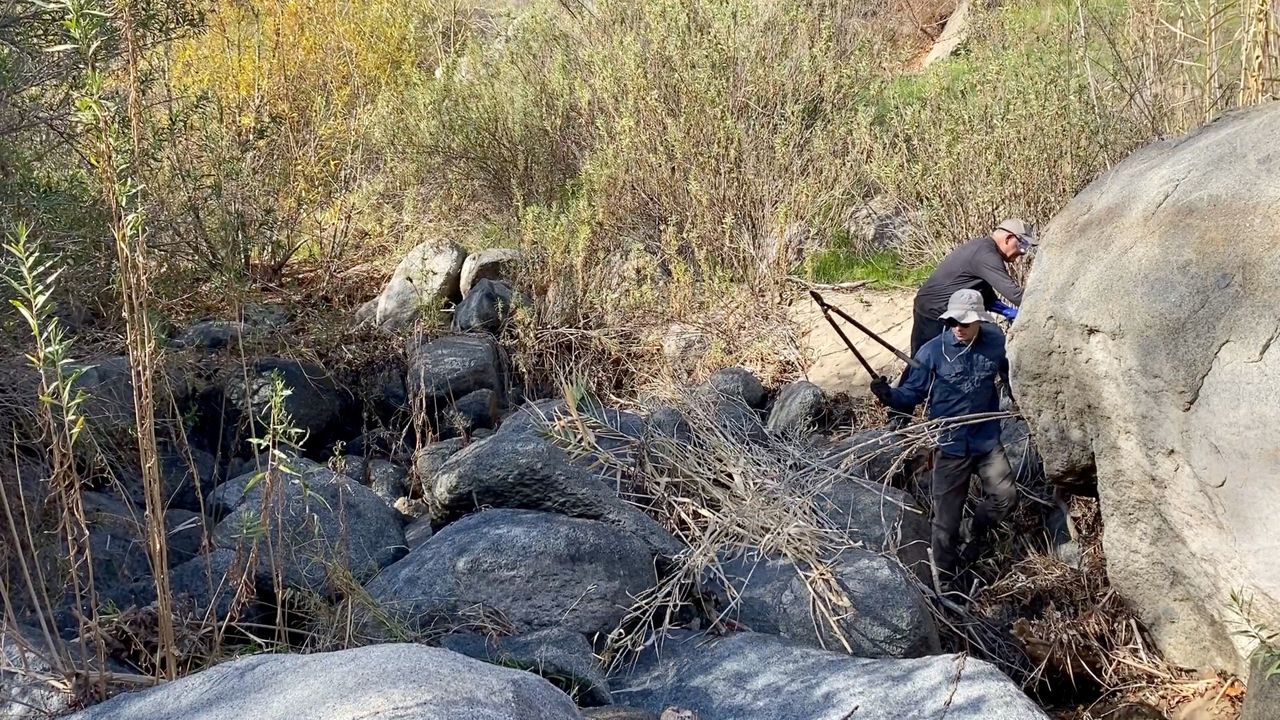SAN DIEGO — Giving up his time to hunt invasive plants doesn’t feel like work to Glenn Perelson.
He’s a volunteer for the San Diego River Park Foundation, working to remove the harmful plants around the El Capitan Reservoir in San Diego County.
“Don’t look at me, look at the view,” Perelson laughed as he hiked to join other volunteers. “It’s such a beautiful spot. It’s nature. It’s largely pristine, untouched.”
The San Diego River Park Foundation has been using a grant to remove invasive plants near the reservoir. Their two main targets are Tamarisk, a type of tree, and Arundo, a giant reed.

“The closer you get to the water, the crazier [the growth] gets,” Perelson said.
Kristofer Gonzalez is the field coordinator for the San Diego River Park Foundation. He said these particular plants are “thirsty bullies” that suck up water before it reaches the reservoir, while also stealing light and space from native plants that wildlife needs to thrive.
He said they impact the surrounding water table and affect the ecosystem’s natural processes.
“These invasive species are stuff that we obviously have brought it, whether for agriculture or ornamentals for our backyard,” Gonzalez said. “We’re here in the El Capitan Reservoir. This is a drinking water source for our county and these invasive species are hurting that. They harm wildlife, but there’s also an economic standpoint that these species are having on us too.”
Gonzalez said volunteers gave over a thousand hours of back-breaking work to help them fight their way through the think growth and deep roots, clearing over six-acres and filling over ten 40-yard dumpsters full of both targeted invasive plants. They carefully removed everything they cut down, so it doesn’t regrow.
Environmental experts estimate invasive plants cost California $82 million every year; they also increase wildfire potential, reduce water resources and threaten wildlife. With every patch they clear, Gonzalez knows they are bringing balance back to the environment.
“This whole mission is a great mission and something that I believe in and that these volunteers obviously believe in too,” he said.
Perelson said it is beautiful to see the natural habitat shine once again, and he hopes to be involved in more projects like this in the future.
“I feel anything we can do to maintain it or improve it is definitely worthwhile,” he said.
The El Capitan Reservoir project also included partners from the City of San Diego, the San Diego Integrated Regional Water Management, Resource Conservation District of Greater San Diego County and the State of California Department of Water Resources.











